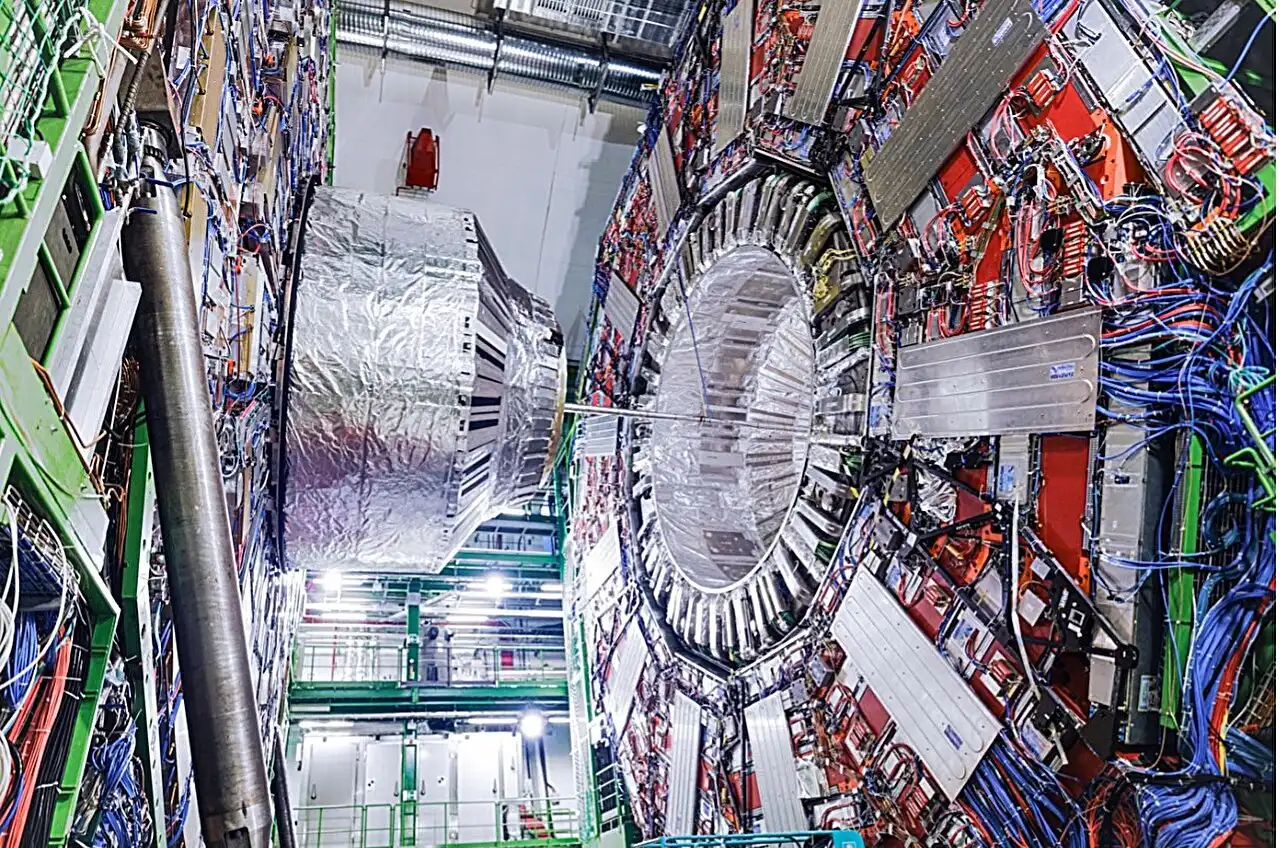CMS experiment CERN measures key parameter Standard Model
CMS collaboration presented precise measurement of leptonic electroweak mixing angle at hadron collider, in agreement with Standard Model, paving way for more precision physics.
At the recent Rencontres de Moriond conference, the CMS collaboration unveiled a groundbreaking measurement of the effective leptonic electroweak mixing angle. This result stands as the most precise measurement ever conducted at a hadron collider and aligns closely with the predictions of the esteemed Standard Model.
The Standard Model of particle physics stands as the pinnacle of precision in describing particles and their interactions. By combining meticulous measurements of its parameters with exact theoretical calculations, the model boasts an unparalleled predictive power that enables the anticipation of phenomena before direct observation.
The model has successfully constrained the masses of pivotal particles such as the W and Z bosons, the top quark, and the Higgs boson. These discoveries have transformed into consistency checks for the model, allowing physicists to push the boundaries of its validity.
Moreover, precise measurements of these particles serve as a potent tool in the quest for new physics beyond the Standard Model. Discrepancies between calculated and measured quantities could signal the presence of novel phenomena waiting to be unearthed.
The electroweak mixing angle plays a crucial role in these consistency checks. As a fundamental parameter of the Standard Model, it governs the transition of the unified electroweak interaction into the electromagnetic and weak interactions through electroweak symmetry breaking. Furthermore, it serves as a mathematical link between the masses of the W and Z bosons, which mediate the weak interaction.
Notably, the most precise measurements of the weak mixing angle were conducted at the CERN LEP collider and the SLD experiment at SLAC. While these values previously clashed, the latest result harmonizes with the Standard Model prediction, marking progress towards reconciling the discrepancy with previous measurements.
"This result underscores the feasibility of conducting precision physics at hadron colliders," remarks Patricia McBride, CMS spokesperson. "The analysis navigated the demanding environment of LHC Run 2, characterized by an average of 35 simultaneous proton-proton collisions. This breakthrough sets the stage for further precision physics at the High-Luminosity LHC, where an increased number of proton pairs will collide concurrently."
Precision tests of Standard Model parameters are a legacy of electron-positron colliders like CERN's LEP. These colliders offer a pristine setting for high-precision measurements, unlike the more challenging proton-proton collisions at the LHC. Despite the obstacles posed by backgrounds from unrelated physics processes and the composite nature of protons, the ATLAS, CMS, and LHCb experiments have yielded a wealth of ultra-precise measurements.
The CMS measurement, achieved through an analysis of angular distributions in proton-proton collisions, is a remarkable feat. This groundbreaking result, derived from data collected from 2016 to 2018 at a center-of-mass energy of 13 TeV, represents the most precise measurement at a hadron collider to date. By surpassing previous measurements from ATLAS, CMS, and LHCb, this achievement showcases the potential for unparalleled precision physics at hadron colliders.











Comments on CMS experiment CERN measures key parameter Standard Model